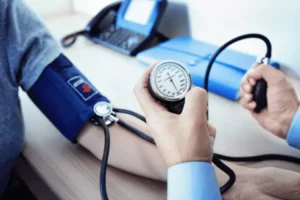Saliva, urine, and hair follicle tests can detect alcohol well past 24 hours. The more you drink, the longer it takes for alcohol to leave your body. One standard drink, which is equal to 12 ounces of regular beer, will generally raise a 150-pound adult’s blood alcohol content to between 0.02 and 0.03. However, the affect that one drink will have on the percentage of alcohol in your blood can vary greatly according to a complex group of personal factors. Additionally, gender differences extend to the risk of alcohol-related harms.
Other factors that affect alcohol metabolism
Ethanol urine tests are not the most accurate, partly because the alcohol concentration in urine tends to lag behind the actual concentration of alcohol in the blood. If you have diabetes, a yeast infection or if you’re producing ketones like on the keto diet, your body can naturally create enough ethanol to trigger a false positive. This is especially true if the urine sample is left out at room temperature, where the microorganisms can continue to ferment glucose and create more alcohol. While the body follows a standard process for absorbing and metabolizing alcohol, how fast it does this is different for everyone. And over time, your body and even parts of your body adjust, for instance, alcohol’s affect on the brain can be relatively short or life-long. Once consumed, alcohol is quickly absorbed into the bloodstream, which does the job of transporting it throughout the body.
What Is It Like to Stop Drinking for Dry January? 3 Women Open Up About Their Experiences
- While the liver is the primary organ responsible for alcohol metabolism, other organs also play a significant role in processing alcohol.
- Calls to our general hotline may be answered by private treatment providers.
- Influential factors include the THC dose, the person’s body fat, sex, how hydrated they are, recent exercise and their metabolism rate, according to Medical News Today.
- If alcohol continues to accumulate in your system, it can destroy cells and, eventually, damage your organs.
While the exact amount of alcohol in beer, wine, and spirits varies, the standard drink is a useful measure to keep track of how much alcohol you consume. Certain medical conditions, especially those that affect how long does alcohol stay in your system kidney or liver function, can affect how quickly alcohol is metabolized and how it affects you. BTW, tolerance often goes hand-in-hand with dependence, which is one of the stages of alcohol misuse.

What Happens If I Drink Alcohol When Taking Metronidazole?
After a night of heavy drinking your BAC may still be over the legal driving limit the next morning. Factors that determine how long alcohol stays in your body include liver size, body mass and the amount of alcohol consumed. A small amount of alcohol is removed from the body through sweat, urine and respiration. Alcohol can be detected in sweat, urine and the breath for at least as long as the liver is breaking down alcohol. According to the current USDA Dietary Guidelines for Americans, the recommendation for moderate drinking is a maximum of two drinks per day for men, one drink per day for women.
- Since blood alcohol concentrations in your system inhibit deep sleep, they also prevent you from making fitness gains from your workouts that day.
- There are several tests to measure the level of alcohol in your blood.
- You can start to feel the effects of alcohol in a matter of minutes.
- Furthermore, the liver, being the primary organ for alcohol metabolism, can suffer from conditions like fatty liver, hepatitis, and cirrhosis due to excessive alcohol intake.
How Long Is Alcohol Detectable in Your Body?
Long-term alcohol use can change your brain’s wiring in much more significant ways. Your gut microbiome is a hotbed of bacteria that help keep your digestive system happy and healthy. The trillions of microbes in your colon and large and small intestines are critical to proper digestion. They also help fend off inflammation and support healthy metabolism. If alcohol continues to accumulate in your system, it can destroy cells and, eventually, damage your organs. Dr. Sengupta shares some of the not-so-obvious effects that alcohol has on your body.
Factors That Affect How Your Body Absorbs and Metabolizes Alcohol
- The body generally processes approximately one standard drink per hour.
- Have a designated driver or a ride-hailing service ready to go if you plan on drinking enough that your judgment will be impaired.
- Breath tests for alcohol can detect alcohol within a shorter time frame, at about 4-6 hours.
- You can learn more about alcohol blood tests by reading the answers to some common questions below.
- Surprisingly, 29% were still below baseline 2 days after consuming alcohol, and 19% after 3 days.
- If you’ve recently consumed a large amount of alcohol, the window of detection may be longer than if you had a single drink.
- While the body follows a standard process for absorbing and metabolizing alcohol, how fast it does this is different for everyone.
In the most extreme and scary cases, these random chemicals have shown up on tests as nitazenes—the synthetic opioid said to be 500 times the strength of fentanyl. The specific timeline for recovering from COVID-19 varies based on several factors, like age and the presence of other health problems. All said, most people recover within two to four weeks unless they have a severe illness, in which case it may take up to 12 weeks. If your nutritional intake is poor, discuss supplementing with protein shakes or other nutritional drinks with a healthcare provider. Specific COVID-19-related symptoms (e.g., trouble breathing) and the potential use of certain treatments can also affect the recovery timeline.
How frequently and how fast you drink, as well as the alcohol content in your beverage, can all influence how long ethanol stays in your system. For example, if you engage in binge drinking—five or more drinks for men or four for women during a single drinking session—it can take many hours for the alcohol to completely clear from your system. Roughly 20% of the ethanol in liquor is absorbed into the blood from the stomach and the rest from the small intestine. The longer alcohol stays in the stomach, the longer it takes to be absorbed and the slower the rate of intoxication. Eating before drinking, and continuing to snack while you consume alcohol, will slow the absorption and reduce its impact, but prolong the detection period.

Factors That Influence Alcohol Processing
- However, certain food groups also have benefits when it comes to helping with the discomfort of withdrawal symptoms and detoxification.
- This biological difference means that, for a given amount of alcohol, women are likely to experience more pronounced effects than men.
- Many people believe that an alcohol metabolite called ethyl glucuronide can be detected by ETG tests for about 80 hours.
- Healthline.com says how long alcohol stays in your system is dependent upon your age, weight, whether you’ve eaten food recently, medications, liver disease and the time between drinks.
- Urine tests can detect metabolized alcohol between 12 and 48 hours after drinking, depending on how much alcohol was consumed.
- When you drink too much alcohol, it can throw off the balance of good and bad bacteria in your gut.











